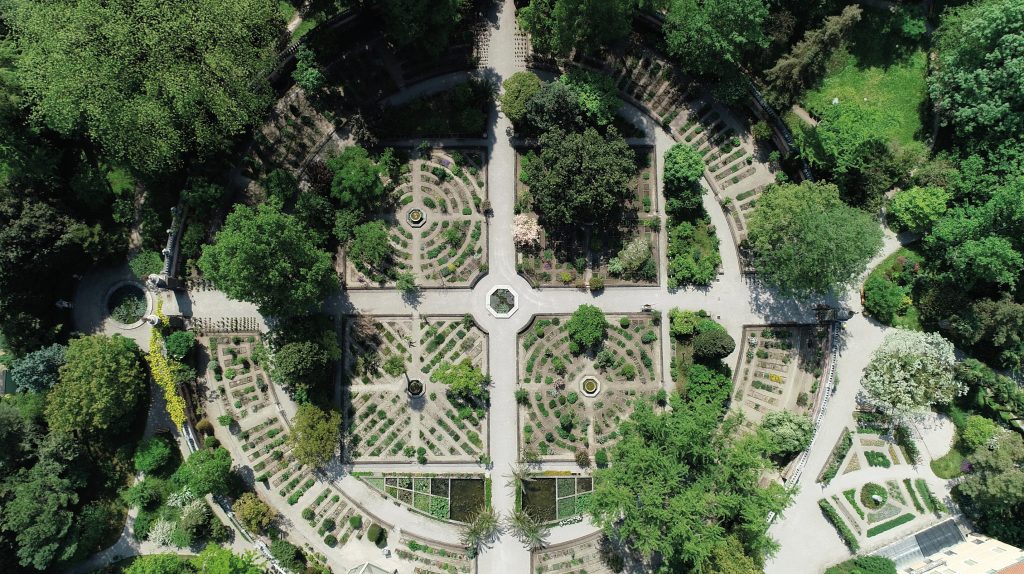With the inauguration of the Museum of Nature and Humankind, the pathway around Padua retracing the steps in the birth of modern science has been made significantly broader.
From the 1st of November it is possible to purchase a single ticket to visit the Museum, the Botanical Garden and Palazzo del Bo at the weekend, which also grants entry to the university museums participating in the “Domenica al museo” initiative.
For those who prefer to visit part of the pathway, it is also possible to purchase the ‘integrated 2-sites ticket’, choosing which of the 3 to visit.
Botanical Garden
The Botanical Garden of the University of Padua, named a UNESCO World Heritage site in 1997, is the oldest university botanical garden in the world.
Laid out in 1545 to allow the cultivation of medicinal plants for scientific and teaching purposes, its original location and singular architecture — a circle inscribing a square, with the figure divided into four quadrants by two perpendicular avenues — have remained unchanged ever since. All kinds of plants grow within the 16th century perimeter wall: medicinal, insectivorous, poisonous, succulent, aquatic and ornamental, as well as historic specimens like “Goethe’s Palm” (1585).
In 2014 the Botanical Garden was expanded with the addition of the Biodiversity Garden, five large greenhouses characterized by high technology and ultra-low environmental impact, in which visitors can take a fascinating journey through the natural biomes of the planet — tropical, sub-humid, temperate and arid desert zones — and learn about the age-old relationship between plants and humans.
The visitor experience has been further enhanced in 2023 with the opening of the Botanical Museum, a new exhibition facility packed with interactive content telling the story of the Garden, its plants and the people who collected them, and the long association between botany and medicine. On the first floor of the building, the Historical herbarium and the new Vincenzo Pinali and Giovanni Marsili historical library of medicine and botany, open to scholars by appointment.
The Botanical Garden can also be visited with the integrated ticket ‘Padua City of Science’.
Contacts:
www.ortobotanicopd.it
prenotazioni@ortobotanicopd.it

Palazzo del BO

Headquarters of the University of Padua for almost five centuries, the Palazzo del Bo (Hospitium Bovis) is one of the city’s most iconic sites.
It was here that Galileo Galilei, the father of modern science, taught between 1592 and 1610. It is also the birthplace of modern medicine, based on direct experience and observation: in 1595, on the initiative of Girolamo Fabrici d’Acquapendente, the Anatomical Theatre was built, the first instance in the world of a permanent structure created for the teaching of anatomy based on the dissection of corpses.
Among the most important parts of the Palazzo del Bo is the Old Courtyard, with a loggia featuring twin rows of columns, where three thousand coats of arms are displayed, some frescoed, others carved in stone.
At the foot of the monumental Cornaro staircase is a statue dedicated to Elena Lucrezia Cornaro Piscopia, the world’s first woman university graduate (Padua, 1678). Preserved in the Hall of the Forty, so called because it houses the portraits of forty illustrious international students (including Stefan Báthory, Oliver Goldsmith and William Harvey), is the Podium of Galileo, who lectured in the Aula Magna now named after him, which was renovated by architect Gio Ponti during the 1940s.
Palazzo del Bo can be visited with a guided tour during the week, and freely on weekends and holidays, also with the integrated ticket ‘Padua City of Science’.
Contacts:
https://www.unipd.it/visite-bo-sala-giganti
tour@unipd.it


